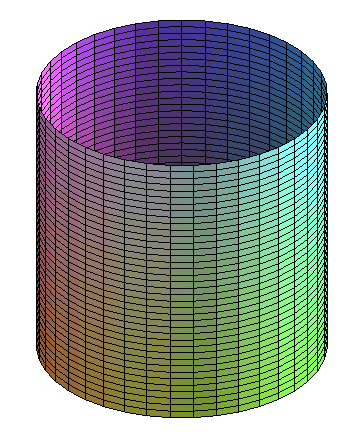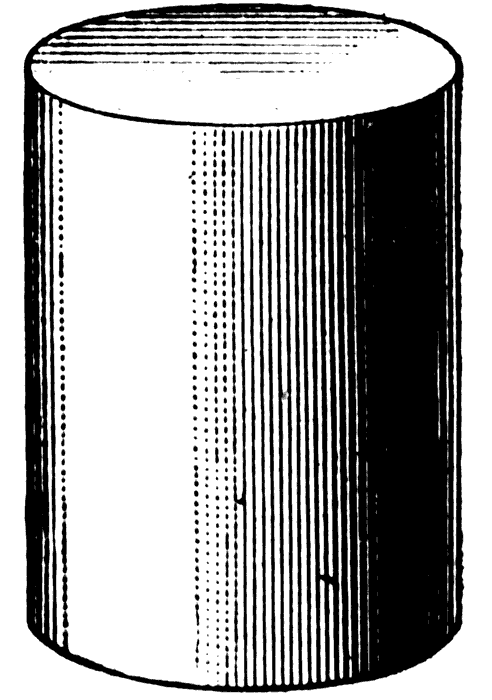 |
American Literature: Romanticism research assignment Student Research Submissions 2016 Research Post 2 |
 |
Michael Osborne
16
November 2016
The Dread Grimoire: Did Hawthorne Inspire the
Necronomicon?
During my research into the influence Nathaniel Hawthorne had on H. P.
Lovecraft, I have been continually surprised at the extent to which Hawthorne’s
work shaped Lovecraft’s own. The two authors have many imagistic and thematic
similarities, such as “the general notion of being haunted by the past,” though
they develop these shared themes in “vastly different ways” (Burleson,
Critical 220). Perhaps most
surprisingly, Hawthorne’s influence extends into Lovecraft’s most celebrated
work, the Cthulhu Mythos; a series of stories whose themes seem antithetical to
Hawthorne’s thematic exploration of humanity’s morality. Most significantly,
Hawthorne’s work may be the inspiration for one of Lovecraft’s most notorious
creations, the dreaded Necronomicon.
Therefore, my second post will research the genesis of Lovecraft’s fabled
grimoire (a book of magical knowledge and instruction).
As my first post discussed, the isolated and degenerate New England towns
invented by Lovecraft form the backbone of the Mythos; the
Necronomicon, however, that “fictive
ancient grimoire of primordial secrets” is its black, beating heart (Burleson,
Critical 75). The
Necronomicon is mentioned in at least
eighteen of Lovecraft’s stories, including some of his most popular works, such
as “The Call of Cthulhu,” At the
Mountains of Madness, The Case of
Charles Dexter Ward, and “The Dunwich Horror.” Lovecraft provides very few
concrete details about the Necronomicon
or its contents, and yet, he uses it in a variety of ways in his stories. It is
quoted briefly (but importantly) in “The Call of Cthulhu,” is only referenced in
The Case of Charles Dexter Ward,
provides the secrets necessary to defeat the “monster” in “The Dunwich Horror,”
and is continually referenced in At the
Mountains of Madness as the protagonist attempts to understand the terrible
secrets he has uncovered. Lovecraft’s repeated use of the
Necronomicon ties these disparate
stories together while also providing him with “a cloud of sinister atmosphere
which would otherwise have had to be built afresh with each story” (Leiber 61).
Very similar to how Romantic writers reacted against the cold, scientific reason
of the Enlightenment, Lovecraft also struggled in a world dominated by science.
Fear of the unknown is paramount in Lovecraft’s work, and scientific progress
continually diminishes that which is unknown. That is not to say that Lovecraft
was opposed to science; he was actually very interested in scientific study and
embraced scientific realism in his later work. Lovecraft used the
Necronomicon, however, “as a back
door or postern gate to realms of wonder and myth, the main approaches to which
had been blocked off by his acceptance of the new universe of materialistic
science” (Leiber 61).
A significant portion of the Cthulhu Mythos’ enduring popularity can be
attributed to the Necronomicon.
Lovecraft’s fictional tome inspired other authors among his correspondents to
design their own mythological grimoires. The
Necronomicon also appears in an
episode of The Simpsons (13.7),
inspired two art books by H. R. Giger, serves as the title and basis of a 1993
movie, is the fulcrum of the plot of Sam Raimi’s
Evil Dead movie trilogy (including
the 2013 remake and the current TV show,
Ash vs Evil Dead), and its most famous quote is used (almost verbatim) in
the Metallica song, “The Thing That Should Not Be.” Just as Lovecraft’s
influence can seem ever-present in modern popular culture, the
Necronomicon specifically is a
massive influence on artists, authors, filmmakers, and musicians. The power of
the Necronomicon is so great that
there are many who refuse to believe it is fictitious. Lovecraft answered many
letters requesting information about the “real”
Necronomicon, booksellers and
librarians receive numerous requests for it, it appeared in the Yale University
Library card catalogue (as a hoax), and there are multiple translations of the
book (also hoaxes) available for sale. Lovecraft always maintained that the book
was purely fictitious, but that doesn’t seem to stop people from believing it is
real.
As Lovecraft’s most significant creation within the Cthulhu Mythos, the
existence of the Necronomicon may be
due to the influence of Nathaniel Hawthorne’s writings generations earlier.
Ronald Burleson claims that Lovecraft was inspired to create his dread grimoire
after reading an entry in one of Hawthorne’s notebooks. Lovecraft read
Hawthorne’s Passages from the American
Notebooks around 1919, and Burleson believes that:
Lovecraft can hardly have missed seeing … the following note from Hawthorne’s
notebooks, dated October 17, 1835: ‘An old volume in a large library, – everyone
to be afraid to unclasp and open it, because it was said to be a book of magic.’[1]
This passage is remarkable for its imagistic similarity to Lovecraft’s oft-cited
fictional tome, the Necronomicon”
(“Hawthorne’s Influence” 42).
Continuing, Burleson declares is it “quite likely, given the timeline, that
Hawthorne’s notebook entry, perhaps in combination with other impressions
gleaned by Lovecraft here and there, may well have inspired the basic notion of
the Necronomicon” (42). A 2016
biography of Lovecraft agrees, stating that throughout Lovecraft’s work, “the
idea of the ‘Terrible Book’ whose contents open doors to worlds of horror, plays
a crucial role in the plotting and narrative. He had this idea in mind as early
as 1919, when he came across a story idea that Hawthorne had considered about a
magical text that everyone fears to read” (Poole).
Some critics and Lovecraft scholars echo Burleson’s claim about Hawthorne
and the Necronomicon, though they
usually do not commit to the theory, while others offer other sources as the
likely inspiration for Lovecraft’s creation. The authors of
The Necronomicon Files, a book
devoted to exploring the occultism and literary mythology of the
Necronomicon, directly disagree with
Burleson. Daniel Harms states that “some consider Hawthorne a likely source of
inspiration. I remain skeptical, however; if this were the source, why did the
Necronomicon not become a
full-fledged ‘book of magic’ until 1927? I believe that Lovecraft’s reading in
the occult during this period was a much greater influence than a sentence in
the ‘Commonplace Book’” (25). Some critics (including J. Vernon Shea and Lin
Carter) believe that the Necronomicon
was inspired by Robert W. Chambers’ The
King in Yellow, though Burleson claims this is chronologically impossible
since Lovecraft’s letters show that he “did not discover Chambers’ horror
fiction until six years after his first use of the idea of the
Necronomicon” (Burleson,
Critical 158n36). Other critics
believe Lovecraft “received some of the inspiration from awareness of the
similarly arcane Book of Thoth that
occurs in Egyptian mythology,” which is why Lovecraft “meant the
Necronomicon to have some antecedents
in Egyptian arcana” (Wetzel 81).
When I began this research, my hope was to find definitive evidence
drawing a line from Nathaniel Hawthorne directly to the
Necronomicon. Unfortunately, but
typical for many studies of influence, I did not find that evidence, and it
appears, in fact, that there is nothing definitive to be found. Lovecraftian
scholars have myriad theories as to the true inspiration for the
Necronomicon, but Lovecraft does not
mention a source in his letters, and no one can provide final proof that any one
theory is superior to the others. Barring the miraculous discovery of heretofore
unknown Lovecraft notes or letters, I don’t think we will ever know for sure the
true source of the Necronomicon.
However, finding direct evidence of the true inspiration for the
Necronomicon is perhaps not as
important as recognizing the many potential influences that combined, in
Lovecraft as in many authors, into new and inspired creative work with its own
integrity.
Works
Cited
Burleson, Donald R. H. P. Lovecraft: A
Critical Study. Greenwood, 1983. Print.
---. “Hawthorne’s Influence on Lovecraft.”
Lovecraft and Influence: His Predecessors
and Successors. Ed. Robert H. Waugh. Scarecrow, 2013. Print.
Harms, Daniel, and John Wisdom Gonce III.
The Necronomicon Files: The Truth behind Lovecraft’s Legend. Weiser, 2003.
Print.
Leiber, Fritz, Jr. “A Literary Copernicus.”
H. P. Lovecraft: Four Decades of
Criticism. Ed. S. T. Joshi. Ohio UP, 1980. 50-62. Print.
Poole, W. Scott. In the Mountains of
Madness: The Life and Extraordinary Afterlife of H.P. Lovecraft. Soft Skull,
2016. Web.
Wetzel, George T. “The Cthulhu Mythos: A Study.”
H. P. Lovecraft: Four Decades of
Criticism. Ed. S. T. Joshi. Ohio UP, 1980. 79-95. Print.
[1]
Burleson takes this quote from Nathaniel Hawthorne.
Passages from the American
Notebooks. Houghton Mifflin, 1887. p. 26.
|
|
|
|


